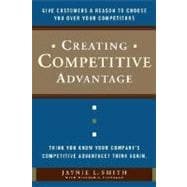
Note: Supplemental materials are not guaranteed with Rental or Used book purchases.
Purchase Benefits
What is included with this book?
JAYNIE L. SMITH is the founder of ICS Marketing, a management consultancy whose clients include Wachovia Bank, First National Bank, and hundreds of small- and medium-size businesses. She also serves as the Florida chair for the Executive Committee, an international network of over 11,000 executives. She lives in Hollywood, Florida. WILLIAM G.FLANAGAN has been a writer and editor at Forbes, The Wall Street Journal, BusinessWeek, Esquire, and New York magazine.
| Acknowledgments | vii | ||||
|
1 | (23) | |||
|
24 | (44) | |||
|
|||||
|
46 | (22) | |||
|
68 | (24) | |||
|
92 | (84) | |||
|
|||||
|
114 | (23) | |||
|
|||||
|
137 | (21) | |||
|
|||||
|
158 | (18) | |||
|
176 | (22) | |||
|
198 | (23) | |||
| Index | 221 |
The New copy of this book will include any supplemental materials advertised. Please check the title of the book to determine if it should include any access cards, study guides, lab manuals, CDs, etc.
The Used, Rental and eBook copies of this book are not guaranteed to include any supplemental materials. Typically, only the book itself is included. This is true even if the title states it includes any access cards, study guides, lab manuals, CDs, etc.
Excerpted from Creating Competitive Advantage: Give Customers a Reason to Choose You over Your Competitors by Jaynie Smith, William G. Flanagan
All rights reserved by the original copyright owners. Excerpts are provided for display purposes only and may not be reproduced, reprinted or distributed without the written permission of the publisher.